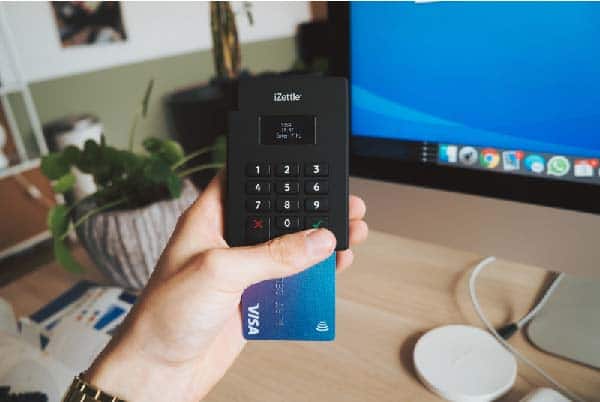Ecommerce Fraud Prevention and Detection Practices
Ecommerce fraud has increased over the years. Data shows 47% of US businesses have experienced a data breach in 2020, and 80% of organizations say they expect a breach that will influence customer data in one year.
Its aftermath is adverse and greatly influences organizations in the long run. It leads to financial losses, negative brand reputation, and customer churn. Therefore, understanding potential threats and prevention is critical to protecting your business. For this reason, this article discusses the best ways to detect and prevent eCommerce fraud.
Let’s get started.
Top 11 Strategies to Prevent eCommerce Fraud
The key to avoiding fraudulent activities is to set up adequate preventive measures. Let’s examine the most effective practices below:
1. Get IP fraud score
IP fraud score indicates the quality of an address using points and scores. Usually, the smaller the score, the lower the threat. These scores range from 0, an acceptable score, to a maximum of 100, indicating a high-level threat of an IP address.
Many companies adopt IP fraud scores to control how fraudsters access their sites. For example, IP addresses with a past connection to bots or fraudsters have high-risk scores and often get blocked from entering websites.
Therefore, you can detect potential threats using anti-fraud tools that examine users’ data with an IP fraud score. This program feeds customers information through risk rules, identifying how dangerous an IP address is.
Fraud scoring automatically rejects, approves, or restricts specific actions depending on the risk level involved. Additionally, they enable faster transactions, dynamic authentication, and effective risk management.
Therefore, mitigating unauthorized access to sites is possible with good fraud scoring. Learn more about implementing this practice with SEON’s IP scoring guide.
2. Perform regular site security audits
Proactiveness is critical for successful eCommerce fraud prevention. With frequent inspection, you identify impending threats and curb them. However, you may also find flaws that promote breaches and fix them.
Therefore, regularly examine your assets, including your tech equipment, crucial documentation, sensitive customer and company details. Then, list future risks associated with each and review your company’s current ability to defend them.
Afterward, implement reasonable security practices to mitigate these risks, considering compliance, cybersecurity, and industry trends. This lets you verify shopping cart software and plugins, identify inactive and active plugins, and examine backup frequency. Consequently, you create adequate measures to protect your business from future data breaches and other fraudulent activities.
3. Use an address verification service
An Address Verification Service (AVS) instantly detects dubious credit card transactions to prevent scams. The sellers’ request for authorization confirms if the billing address correlates to the cardholder’s location record in the bank.
If the addresses don’t match, it declines, restricts, or flags it for investigation, preventing unauthorized payments. So, an address verification service improves data security for accurate buyers’ mailing, shipping, and billing addresses.
4. Check card verification value
Card Verification Value (CVV) is a three-digit code behind credit and debit cards and the four-digit code at the back of the American Express credit card. CVV safeguards your credit or debit card against theft, fraud, or unauthorized transactions. It also ensures that only the owner uses it.
It is illegal for business owners to store customers’ CVV information with other data. This makes it difficult for illicit owners to possess them. As a result, you can reduce fake transactions because those in possession of the CVV are likely to be authorized owners.
5. Follow PCI requirements
The Payment Card Industry (PCI) standards enable businesses to perform practical data security activities and meet legal requirements. However, executing these actions helps you notice inconsistencies in the data security system early. For this reason, you should comply with the PCI standards to protect data.
To do this, follow these PCI’s practices:
- Establish firewall configuration to safeguard buyers’ data
- Don’t use the passwords your vendor provided to secure data
- Protect your customers’ details
- Encrypt transmission of buyers’ details across all networks
- Update your antivirus software programs regularly
- Secure your systems and applications
- Restrict buyers’ access to data when you notice a suspicious activity
- Provide a unique ID to every individual with access
- Evaluate your security processes frequently
- Establish a strict security policy
- Track all connections to your company’s private information
6. Use tracking numbers for orders
Tracking numbers prevent chargeback fraud, which happens when a customer requests a refund claiming that an item wasn’t delivered. The issuing bank initiates the refund, forcing merchants to pay all transaction fees.
To prevent this, use tracking orders for all items sold. Also, request your users’ signatures after they receive goods. This way, you can confirm the order was delivered and control chargeback fraud.
7. Request strong passwords from buyers
Strong passwords are excellent at preventing fraudsters from hacking customers’ accounts. Therefore, discourage them from using common or easy identifications to secure their activities with your company. Instead, request a password with a minimum of six characters, consisting of upper and lower cases with numbers and symbols.
Buyers should create accounts before transactions. This way, each user has a unique identity. It also enables proper documentation and records that prevent data breaches.
8. Educate your staff on data security
Your staff should be aware of dubious eCommerce practices and how to avert them. Therefore, establish practical data security measures and teach them how to comply. Ensure they know the suspicious transaction signs and report such cases.
Additionally, enlighten your employees on other risk management practices and the consequences of non-compliance. This way, you can collaborate effectively to build a robust information security system.
9. Don’t collect excessive customer-sensitive information
Usually, the consequences of data breaches correspond with the amount of hackers’ access. So, it’s best to limit the amount of users’ sensitive information you store. To do this, don’t request buyers’ details unless it’s necessary. Also, keep the amount of data you gather to the minimum.
Collect details required to complete a transaction and avoid asking for data irrelevant to your business. By doing this, you can keep your organization and customer safe when data breaches occur.
10. Document fraudulent transactions and attempt
Record every fraudulent transaction and attempt to prevent them from recurring. With accurate documentation, your employees will learn fraudsters’ tricks and strategies to quickly identify signs in the future. Then, no matter the practices, they can study the patterns and proactively develop systems to counter them.
11. Integrate fraud prevention software
An excellent fraud prevention tool automatically tracks activities in your organization, thereby detecting and preventing fraudulent practices in real-time. Therefore, integrate functional software to monitor your transactions efficiently.
However, ensure it offers geolocation, fraud scoring, device fingerprinting, and velocity checking features. This way, you maximize its offerings to safeguard your company.
Additionally, if you have existing software, update regularly to maintain its functionality. This keeps your program adequately equipped to combat scammers evolving practices.
How to identify common eCommerce fraud
To prevent fraudulent activities, you must identify them first. Below are five common signs of online fraud to look out for:
1. Multiple orders in a short period
Many fraudsters conduct card testing to know which numbers are active and inactive. So, they use stolen credit cards to make multiple orders at once or in a low time frame. By doing this, they eliminate invalid numbers and continue their deceitful practices.
2. New email addresses for purchases
Many customers will likely use an email for several years, so conduct further investigation if you notice a buyer using a new email to order products. Check the first time they used the email, then examine the last usage platform.
If the first seen date is zero, then a hacker might have created a new email for a fraudulent purchase. Also, if the electronic mail is quite old and hasn’t been functional for several years, it could be a fraud.
3. Large order placement
If you notice an order larger than the usual purchase, the person placing the request is probably a fraudster. This is because many of them prefer to exhaust the money in the cards before the legitimate owners claim them.
4. Shipping to a single address using multiple cards
Fraudsters are likely to steal multiple cards and order items with them. So, naturally, these cards will be traced to one location. Since it’s unusual for customers to own several cards, such transactions may be fraudulent.
5. Paying more for fast shipping
Scammers are likely to speed up a transaction to avoid getting caught, so they may pay more to get orders delivered quickly. Usually, these demands are excessive because they prefer to order at once.
If you encounter any of these scenarios, investigate to confirm that the card owner is the person making the purchase.
Conclusion
Fraudulent eCommerce activities remain rampant worldwide, which is why businesses need to put necessary precautions in place. To avoid threats and fraud, acquire IP fraud score, monitor security systems, introduce address verification service, examine card verification value, and comply with PCI regulations. Also, encourage buyers to use strong passwords, teach your staff best security practices, minimize gathering vital customers’ data and record all fraudulent transactions.
Sell more, understand your customers’ journey for free!
Sales and Marketing teams spend millions of dollars to bring visitors to your website. But do you track your customer’s journey? Do you know who buys and why?
Around 8% of your website traffic will sign up on your lead forms. What happens to the other 92% of your traffic? Can you identify your visiting accounts? Can you engage and retarget your qualified visitors even if they are not identified?








